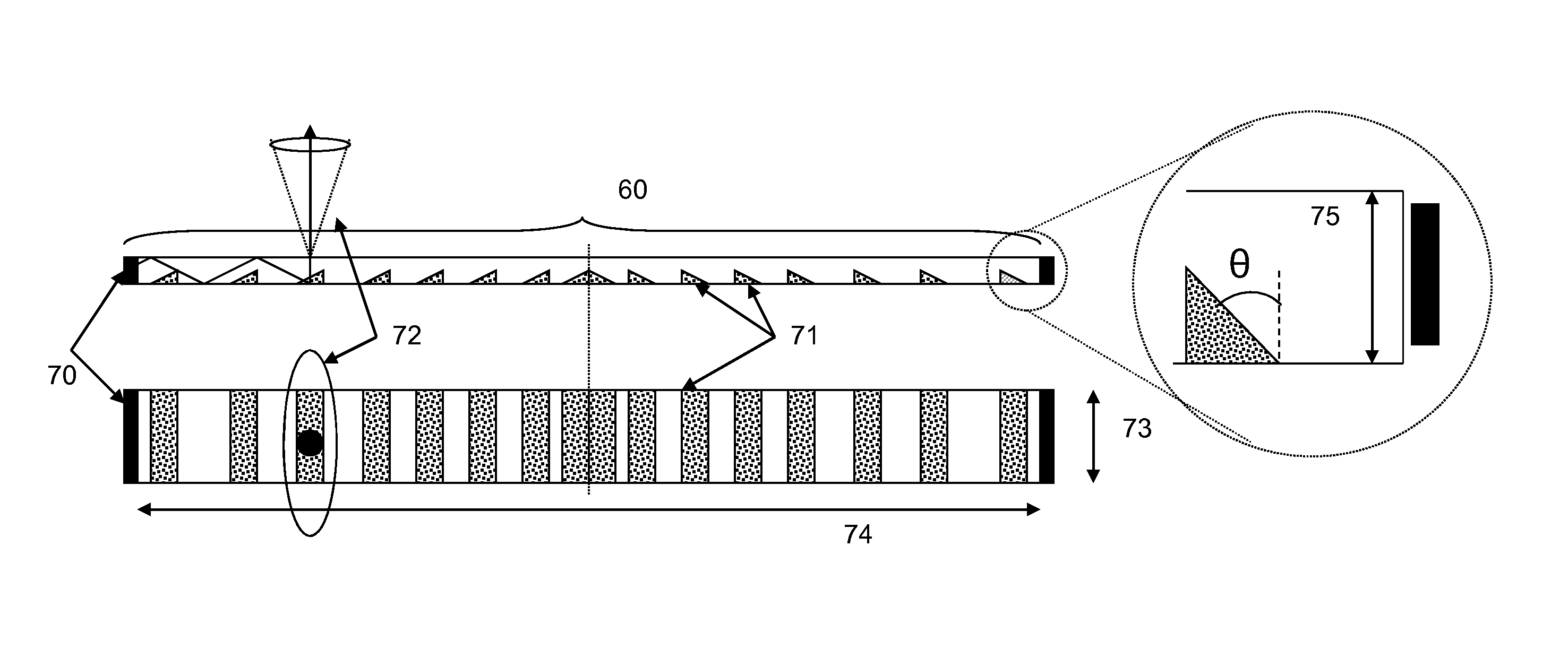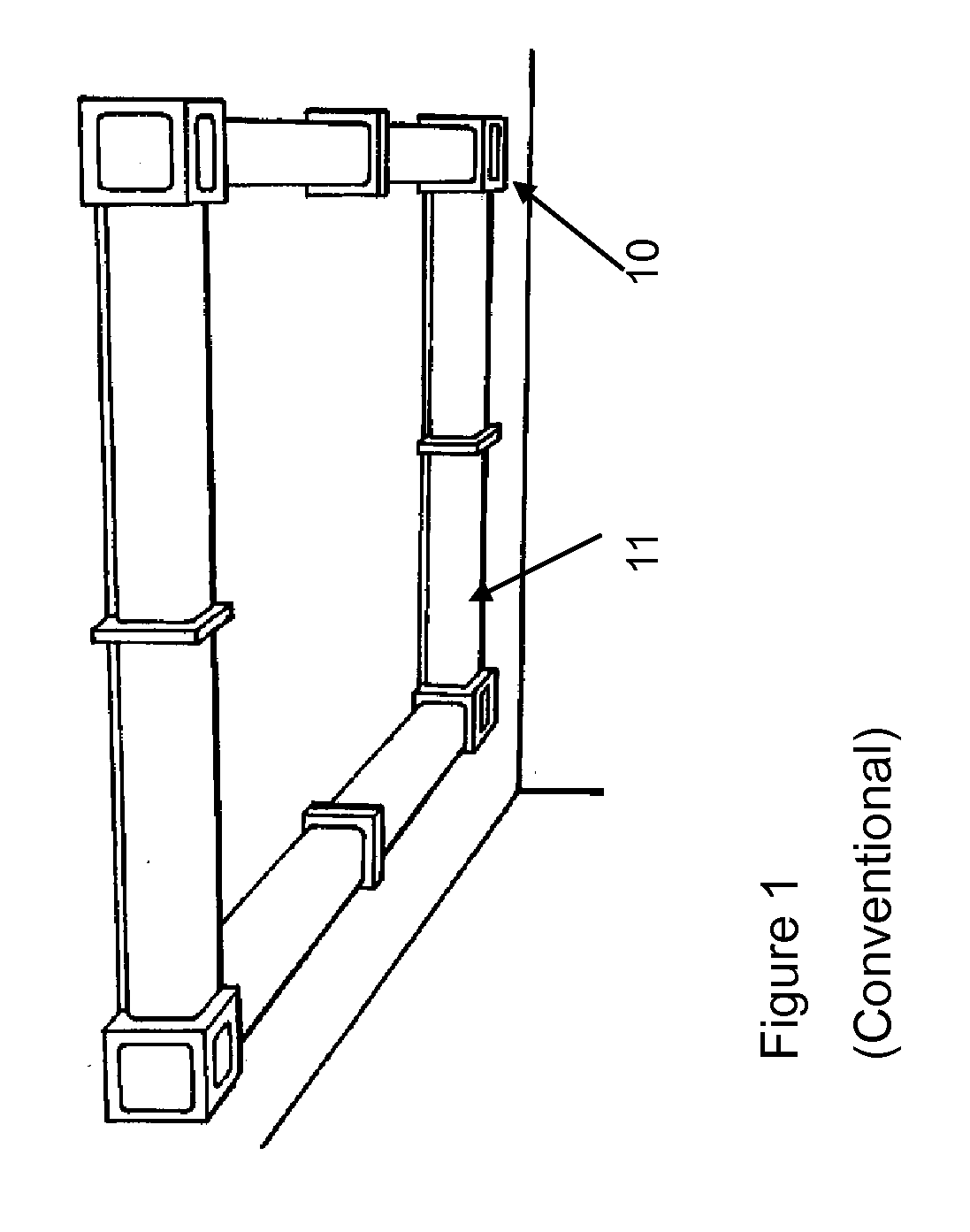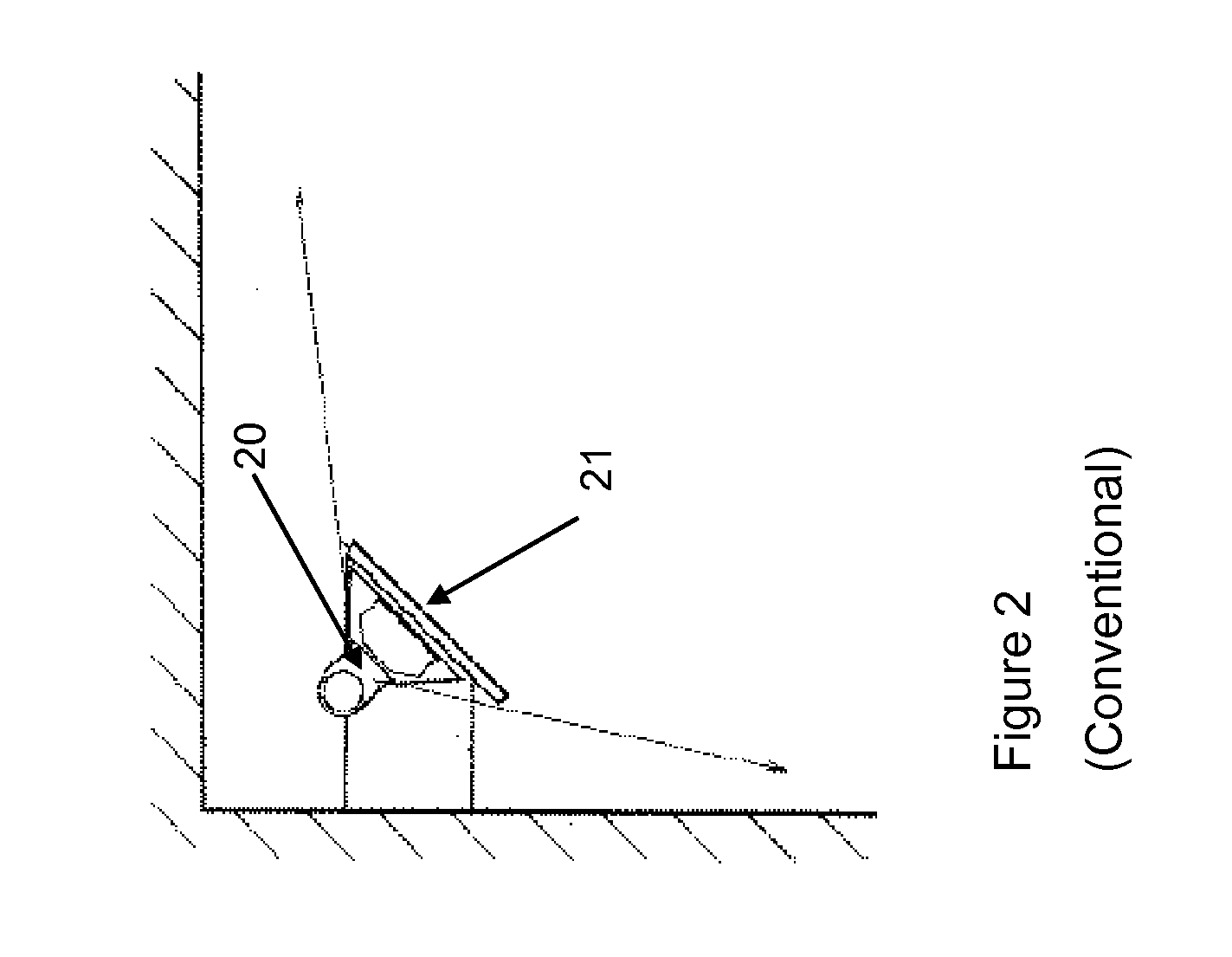Indoor illumination system
a technology of indoor illumination and cornice, which is applied in the direction of lighting support devices, instruments, lighting and heating apparatus, etc., can solve the problems of reducing the efficiency of projector lighting, reducing the efficiency of emitted light into directions where it is not needed, and the prior art side emitting sources are not ideal for projector lighting, etc., to achieve the effect of greatly reducing or eliminating problems such as glare, improving problems with conventional light sources, and reducing the illumination around corni
- Summary
- Abstract
- Description
- Claims
- Application Information
AI Technical Summary
Benefits of technology
Problems solved by technology
Method used
Image
Examples
third embodiment
[0126]In a third embodiment in accordance with the invention, illustrated in FIG. 8, the light source may be as described above, but located on the ceiling 80, away from the walls (e.g., a predetermined distance from the walls), in order to direct light towards the middle of the room or interior space. This may be particularly desirable in, but is not limited to, larger areas where a cornice mounted light source 60 may not provide sufficient illumination further away from the walls.
fourth embodiment
[0127]A fourth embodiment in accordance with the present invention describes a combination of the previous embodiments, with light guide light sources located both on the cornice 60 and the ceiling 80 for optimum room illumination. This embodiment is illustrated in FIG. 9.
fifth embodiment
[0128]In a fifth embodiment in accordance with the present invention, illustrated in FIG. 10, the light source 100 is much smaller than the illumination area, and is located away from the cornice, for example in the centre of the ceiling. In this case the light source is in-coupled to an optic 101 which projects illumination 103 towards the cornice, where the light is then redirected into the room via reflection or scattering. For example, the light source maybe configured to project light from a light exit surface toward a target area.
[0129]The light source may include, but is not limited to, one or more LEDs coupled to a side-emitting optic. The optic material should be a transparent material such as glass or PMMA. An example optic geometry is shown in FIG. 11. In this example the optic first collimates the LED output, positioned at 110 (e.g., a light receiving surface), through a combination of refraction and total internal reflection on collimating surface 111 (which is arranged...
PUM
 Login to View More
Login to View More Abstract
Description
Claims
Application Information
 Login to View More
Login to View More - R&D
- Intellectual Property
- Life Sciences
- Materials
- Tech Scout
- Unparalleled Data Quality
- Higher Quality Content
- 60% Fewer Hallucinations
Browse by: Latest US Patents, China's latest patents, Technical Efficacy Thesaurus, Application Domain, Technology Topic, Popular Technical Reports.
© 2025 PatSnap. All rights reserved.Legal|Privacy policy|Modern Slavery Act Transparency Statement|Sitemap|About US| Contact US: help@patsnap.com



